Kshobha, Kṣōbha, Kṣobha: 18 definitions
Introduction:
Kshobha means something in Hinduism, Sanskrit, the history of ancient India, Marathi, Hindi. If you want to know the exact meaning, history, etymology or English translation of this term then check out the descriptions on this page. Add your comment or reference to a book if you want to contribute to this summary article.
The Sanskrit terms Kṣōbha and Kṣobha can be transliterated into English as Ksobha or Kshobha, using the IAST transliteration scheme (?).
Alternative spellings of this word include Kshobh.
In Hinduism
Ayurveda (science of life)
Source: gurumukhi.ru: Ayurveda glossary of termsKṣobha (क्षोभ):—Fluid thrill
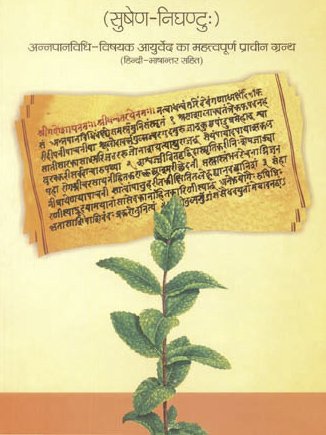
Āyurveda (आयुर्वेद, ayurveda) is a branch of Indian science dealing with medicine, herbalism, taxology, anatomy, surgery, alchemy and related topics. Traditional practice of Āyurveda in ancient India dates back to at least the first millenium BC. Literature is commonly written in Sanskrit using various poetic metres.
Shaktism (Shakta philosophy)
Source: Google Books: Manthanabhairavatantram1) Kṣobha (क्षोभ) refers to “disturbance”, according to Tantric texts such as the Kubjikāmata-tantra, the earliest popular and most authoritative Tantra of the Kubjikā cult.—HRĪṂ is the seed-syllable of Māyā and Lakṣmī. It belongs to Viṣṇu and corresponds to the element Water. Its form is like a wheel of fire (alātacakra). [...] The Kubjikāmatatantra also attributes magical powers to the Five Praṇavas, which are said to bring about sexual arousal (drāvaṇa), disturbance (kṣobha), delusion (moha), sleep (jṛmbhana) and the desiccation of the enemy’s body (śoṣaṇa), respectively.
2) Kṣobha (क्षोभ, “arousal”) refers to the particular sign associated with the First Praṇava, according to the Manthānabhairavatantra, a vast sprawling work that belongs to a corpus of Tantric texts concerned with the worship of the goddess Kubjikā.—The “Sūtra of the Five Praṇavas”, which is chapter fifty-four of the Kumārikākhaṇḍa, is concerned solely with aligning the praṇavas with the seats and placing them along the axis of the body. According to this sūtra, each of the Five Praṇavas has its own colour and corresponds to a state of attainment evidenced by signs of possession (āveśa) [i.e., kṣobha, ‘arousal’]. They are projected into five places along the vertical axis of the body, which, in some cases, correspond to the locations of the inner Wheels implying thereby that they mark stages in the ascent of Kuṇḍalinī through them. [...]
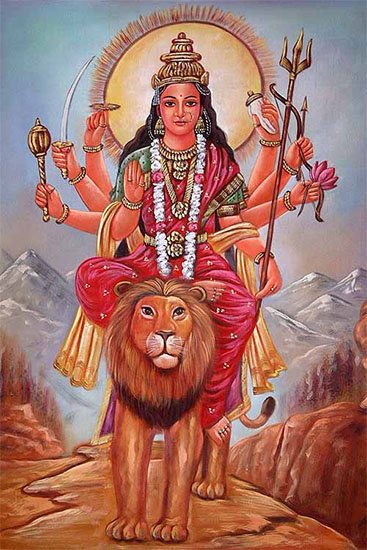
Shakta (शाक्त, śākta) or Shaktism (śāktism) represents a tradition of Hinduism where the Goddess (Devi) is revered and worshipped. Shakta literature includes a range of scriptures, including various Agamas and Tantras, although its roots may be traced back to the Vedas.
Shaivism (Shaiva philosophy)
Source: Brill: Śaivism and the Tantric TraditionsKṣobha (क्षोभ) (Cf. Kṣobhaṇa) refers to “stimulating” (one’s sexual partner), according to verse 45.201-202 of the Brahmayāmala-tantra (or Picumata), an early 7th century Śaiva text consisting of twelve-thousand verses.—Accordingly, “The Sādhaka should make [her] sit down there. He should start kissing and embracing her and stimulating (kṣobha) her. He should collect the purifying [substance, i.e. the sexual fluids]. Overjoyed, they should consume [the fluids]...”.
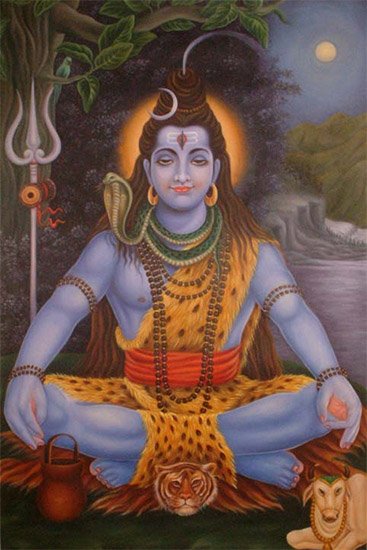
Shaiva (शैव, śaiva) or Shaivism (śaivism) represents a tradition of Hinduism worshiping Shiva as the supreme being. Closely related to Shaktism, Shaiva literature includes a range of scriptures, including Tantras, while the root of this tradition may be traced back to the ancient Vedas.
Ganitashastra (Mathematics and Algebra)
Source: archive.org: Hindu MathematicsKṣobha (क्षोभ) refers to “ten sextillion” (10,000,000,000,000,000,000,000) in various lists of numeral denominations, according to gaṇita (“science of calculation”) and Gaṇita-śāstra, ancient Indian mathematics and astronomy.—We can definitely say that from the very earliest known times, ten has formed the basis of numeration in India. While the Greeks had no terminology for denominations above the myriad (104), and the Romans above the milk (103), the ancient Hindus dealt freely with no less than eighteen denominations [e.g., kṣobha]. Cf. Yajurveda-saṃhitā (Vājasanyī) XVII.2; Taittirīya-saṃhitā IV.40.11, VII.2.20.1; Maitrāyaṇī-saṃhitā II.8.14; Kāṭhaka-saṃhitā XVII.10, XXXIX.6; Anuyogadvāra-sūtra 142; Āryabhaṭīya II.2; Triśatikā R.2-3; Gaṇitasārasaṃgraha I.63-68.
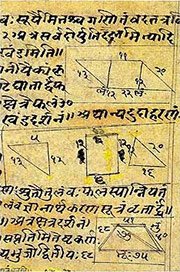
Ganitashastra (शिल्पशास्त्र, gaṇitaśāstra) refers to the ancient Indian science of mathematics, algebra, number theory, arithmetic, etc. Closely allied with astronomy, both were commonly taught and studied in universities, even since the 1st millennium BCE. Ganita-shastra also includes ritualistic math-books such as the Shulba-sutras.
India history and geography
Source: Cologne Digital Sanskrit Dictionaries: Indian Epigraphical GlossaryKṣobha.—cf. a-lavaṇa-guḍa-kṣobha (IE 8-5; EI 1); obligation or trouble. Note: kṣobha is defined in the “Indian epigraphical glossary” as it can be found on ancient inscriptions commonly written in Sanskrit, Prakrit or Dravidian languages.
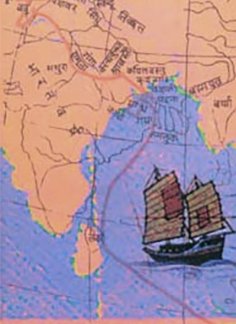
The history of India traces the identification of countries, villages, towns and other regions of India, as well as mythology, zoology, royal dynasties, rulers, tribes, local festivities and traditions and regional languages. Ancient India enjoyed religious freedom and encourages the path of Dharma, a concept common to Buddhism, Hinduism, and Jainism.
Languages of India and abroad
Marathi-English dictionary
Source: DDSA: The Molesworth Marathi and English Dictionarykṣōbha (क्षोभ).—m (S) Agitation, commotion, excitement, perturbation; disturbance generally of the tranquil or still state. 2 By eminence. The commotion of anger,--passion, rage, fury.
Source: DDSA: The Aryabhusan school dictionary, Marathi-Englishkṣōbha (क्षोभ).—m Agitation; the commotion of anger, rage.
Marathi is an Indo-European language having over 70 million native speakers people in (predominantly) Maharashtra India. Marathi, like many other Indo-Aryan languages, evolved from early forms of Prakrit, which itself is a subset of Sanskrit, one of the most ancient languages of the world.
Sanskrit dictionary
Source: DDSA: The practical Sanskrit-English dictionaryKṣobha (क्षोभ).—[kṣubha-ghañ]
1) Shaking, moving, tossing; Meghadūta 28, 97; so काननक्षोभः (kānanakṣobhaḥ) &c.
2) Jolting; R.1.58; अयं तस्या रथक्षोभादंसेनांसो निपीडितः (ayaṃ tasyā rathakṣobhādaṃsenāṃso nipīḍitaḥ) V.3.11.
3) (a) Agitation, disturbance, excitement, emotion; क्षोभक° (kṣobhaka°) Uttararāmacarita 3.3.29; स्वयं- वरक्षोभकृतामभावः (svayaṃ- varakṣobhakṛtāmabhāvaḥ) R.7.3; अथेन्द्रियक्षोभमयुग्मनेत्रः पुनर्वशित्वाद्ब- लवन्निगृह्य (athendriyakṣobhamayugmanetraḥ punarvaśitvādba- lavannigṛhya) Kumārasambhava 3.69. (b) Provocation, irritation; प्रायः स्वं महिमानं क्षोभात्प्रतिपद्यते जन्तुः (prāyaḥ svaṃ mahimānaṃ kṣobhātpratipadyate jantuḥ) Ś.6.31.
Derivable forms: kṣobhaḥ (क्षोभः).
--- OR ---
Kṣobha (क्षोभ).—&c. See under क्षुभ् (kṣubh).
--- OR ---
Kṣobha (क्षोभ).—[kṣu-man] (?mam) A room on the top of a house.
-mam Woven silk.
Derivable forms: kṣobhaḥ (क्षोभः).
Source: Cologne Digital Sanskrit Dictionaries: Shabda-Sagara Sanskrit-English DictionaryKṣobha (क्षोभ).—m.
(-bhaḥ) 1. Agitation, emotion. 2. Shaking, trembling, tossing. E. kṣubh to be agitated, ghañ aff.
Source: Cologne Digital Sanskrit Dictionaries: Benfey Sanskrit-English DictionaryKṣobha (क्षोभ).—i. e. kṣubh + a, m. Agitation, Mahābhārata 1, 1214; [Śākuntala, (ed. Böhtlingk.)] [distich] 158.
Source: Cologne Digital Sanskrit Dictionaries: Cappeller Sanskrit-English DictionaryKṣobha (क्षोभ).—[masculine] shaking, agitation, emotion.
Source: Cologne Digital Sanskrit Dictionaries: Monier-Williams Sanskrit-English Dictionary1) Kṣobha (क्षोभ):—[from kṣubh] a m. shaking, agitation, disturbance, tossing, trembling, emotion, [Mahābhārata; Rāmāyaṇa; Raghuvaṃśa; Vikramorvaśī; Meghadūta] etc.
2) [v.s. ...] (in [dramatic language]) an emotion that is the cause of any harsh speeches or reproaches, [Sāhitya-darpaṇa 471 and 480] (cf. bala-kṣ.)
3) [v.s. ...] a strong current of water, [Mahābhārata]
4) b bhaka, etc. See √kṣubh.
Source: Cologne Digital Sanskrit Dictionaries: Yates Sanskrit-English DictionaryKṣobha (क्षोभ):—(bhaḥ) 1. m. Agitation.
Source: DDSA: Paia-sadda-mahannavo; a comprehensive Prakrit Hindi dictionary (S)Kṣobha (क्षोभ) in the Sanskrit language is related to the Prakrit word: Khobha.
[Sanskrit to German]
Sanskrit, also spelled संस्कृतम् (saṃskṛtam), is an ancient language of India commonly seen as the grandmother of the Indo-European language family (even English!). Closely allied with Prakrit and Pali, Sanskrit is more exhaustive in both grammar and terms and has the most extensive collection of literature in the world, greatly surpassing its sister-languages Greek and Latin.
Hindi dictionary
Source: DDSA: A practical Hindi-English dictionaryKṣobha (क्षोभ) [Also spelled kshobh]:—(nm) agitation; excitement, commotion; fret.
...
Kannada-English dictionary
Source: Alar: Kannada-English corpusKṣōbha (ಕ್ಷೋಭ):—
1) [noun] a sudden jerk or shake, as from a blow; a jolt.
2) [noun] the act, an instance or sound of stirring.
3) [noun] tumultuous movement; great agitation.
4) [noun] the state of being mentally agitated or upset.
5) [noun] violent anger; wild rage; fury.
6) [noun] any extreme misfortune bringing great loss and sorrow; a disaster.
7) [noun] a mathematical number with number one followed by twenty two zeros.
8) [noun] an extreme stimulation of the nerves, muscles, etc. accompanying the passage of electric current through the body; a mental shock.
9) [noun] a kind of joyful ecstasy caused by literature.
Kannada is a Dravidian language (as opposed to the Indo-European language family) mainly spoken in the southwestern region of India.
See also (Relevant definitions)
Starts with: Kshobhaja, Kshobhaka, Kshobhakari, Kshobhakrishti, Kshobhamta, Kshobhana, Kshobhanem, Kshobhani, Kshobhayitar, Kshobhayitri, Kshobhayitva.
Ends with (+11): A-lavana-guda-kshobha, Agatakshobha, Akshobha, Avikshobha, Balakshobha, Cittakshobha, Duhkshobha, Hridayakshobha, Ishrvari-kshobha, Ishvarikshobha, Jatakshobha, Kayasankshobha, Kritakshobha, Mahakshobha, Manahsankshobha, Nihsamkshobha, Parivikshobha, Pittakshobha, Prakshobha, Purakshobha.
Full-text (+36): Akshobha, Khobha, Jatakshobha, Hridayakshobha, Sainyakshobha, Vicikshobha, Pittakshobha, Vatakshobha, Rathakshobha, Balakshobha, Vikshobha, Ishrvari-kshobha, Pittaprakopa, Manahkshobhakara, Kshopam, Agatakshobha, Vikshobhin, Vyakshobha, Kshobh, Kshobhanem.
Relevant text
Search found 13 books and stories containing Kshobha, Kṣōbha, Kṣobha, Ksobha; (plurals include: Kshobhas, Kṣōbhas, Kṣobhas, Ksobhas). You can also click to the full overview containing English textual excerpts. Below are direct links for the most relevant articles:
Garga Samhita (English) (by Danavir Goswami)
Verse 2.14.2 < [Chapter 14 - Description of Kāliya’s Story]
Bhakti-rasamrta-sindhu (by Śrīla Rūpa Gosvāmī)
Verse 2.5.120 < [Part 5 - Permanent Ecstatic Mood (sthāyī-bhāva)]
Verse 2.4.166 < [Part 4 - Transient Ecstatic Disturbances (vyābhicāri-bhāva)]
Verse 3.3.24 < [Part 3 - Fraternal Devotion (sakhya-rasa)]
Brihad Bhagavatamrita (commentary) (by Śrī Śrīmad Bhaktivedānta Nārāyana Gosvāmī Mahārāja)
Verse 2.3.44 < [Chapter 3 - Bhajana (loving service)]
Chaitanya Bhagavata (by Bhumipati Dāsa)
Verse 1.12.261 < [Chapter 12 - The Lord’s Wandering Throughout Navadvīpa]
Dramaturgy in the Venisamhara (by Debi Prasad Namasudra)
Raudra Rasa (emotion of wrath) < [Chapter 4 - Dramaturgy in Veṇīsaṃhāra]
Tattvartha Sutra (with commentary) (by Vijay K. Jain)
Verse 9.18 - The five kinds of conduct (cāritra) < [Chapter 9 - Stoppage and Shedding of Karmas]